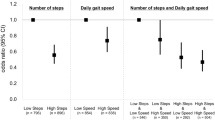Abstract
Elderly people become weak until they reach a state of frailty. At this time, their health begins to get worse and they are more likely to suffer bone fractures, disorders, and diseases, and they become dependent. Delaying or reducing frailty level is important to improve the quality of life of elderly people. There are many parameters to consider for frailty detection and diagnosis. In this sense, assessment of physical condition, through gait and other physical exercises, is the most important domain in frailty evaluation. Nowadays, geriatricians and physiotherapists use several tests and scales based on indicators to provide scores related to physical assessment. However, these scores depend on the viewpoint of the geriatrician. So, the assessment contains a level of subjectivity. Besides, frailty detection includes the study of other indicators from nutritional, cognitive, and social domains. In this paper, we propose a system to support physicians determining an accurate and centralized elderly frailty diagnosis, by using an accelerometer-enabled mobile phone. The accelerometer collects data movement from physical activity and calculates a set of measures that are combined with clinical indicators (from tests and medical instruments) providing a frailty assessment to facilitate decision-making and the subsequent treatment.









Similar content being viewed by others
Notes
Presence of one or more disorders in addition to a primary disease or disorder.
References
Woodhouse KW, Wynnie H, Baillie S et al (1988) Who are the frail elderly? Q J Med 68:505–506
Waltson J, Fried LP (1999) Frailty and the old man. Med Clin North Am 83(5):1173–1194
Fried LP, Waltson J, Newman AB (2001) Frailty in older adults: evidence for phenotype. J Gerontol 56A(3):146–156
Mahoney FI, Barthel D (1965) Functional evaluation: the Barthel index. Md State Med J 14:56–61
Tinetti ME (1986) Performance-oriented assessment of mobility problems in elderly patients. J Am Geriatr Soc 34(2):119–126
Searle SD, Mitnitski A, Gahbauer EA, Gill T, Rockwood K (2008) A standard procedure for creating a frailty index. BMC Geriatics 8:8–24
Villarreal V, Laguna J, López S et al (2009) Proposal for mobile diabetes self-control: towards a patient monitoring framework. 10th International work-conference on artificial neural networks, IWAAL
Fontecha J, Hervás R, Bravo J, Villarreal V (2011) An NFC approach for nursing care training. 3rd International workshop on near field communication (IEEE), Hagenberg, Austria
Hervás R, Bravo J, Fontecha J (2011) Awareness marks: adaptive services through user interactions with augmented objects. Pers Ubiquit Comput 15(4):409–418
Hervás R, Bravo J, Fontecha J (2010) A context model based on ontological languages: a proposal for information visualization. J Univers Comput Sci 16(12):1539–1555
Lester J, Choudhury T, Borriello G (2006) A practical approach to recognizing physical activities. 4th International conference on pervasive computing, Dublin
Hynes M, Wang H, Kilmartin L, McCarrick E (2011) Accurate monitoring of human physical activity levels for medical diagnosis and monitoring using off-the-shelf cellular handsets. Pers Ubiquit Comput 15(7):667–678
Zhang T, Wang J, Liu P, Hou J (2006) Fall detection by embedding an accelerometer in cellphone and using kfd algorithm. IJCSNS Int J Comput Sci Netw Secur 6(10)
Oberzaucher J, Jagos H, Zödl C, Hlauschek W, Zagler W (2010) Using a wearable insole gait analyzing system for automated mobility assessment for older people. 12th International conference on computers helping people with special needs, ICCHP, Viena
Lord S, Rochester L, Baker K, Nieuwboer A (2008) Concurrent validity of accelerometry to measure gait in Parkinsons Disease. Gait Posture 27(2):357–359
Tehou O, Jakobi J, Vandervoort A, Jones G (2012) A comparison of physical activity (PA) assessment tools across levels of frailty. Gerontol Geriatrics 54(3):307–314
Kamaruzzaman S, Ploubidis G, Fletcher A, Ebrahim S (2010) A reliable measure of frailty for a community dwelling older population. Health Qual Life Outcomes 8:123. doi:10.1186/1477-7525-8-123
Foerster F, Fahrenberg J (2000) Motion pattern and posture: correctly assessed by calibrated accelerometers. Behav Res Methods Instrum Comput 32(3):450–457
Matias S, Nayak U, Isaacs B (1986) Balance in elderly patients: the “get-up and go” test. Arch Phys Med Rehabil 67(6):387–389
Espinoza S, Fried L (2007) Risk factors for frailty in the older adult. Clin Geriatrics 15(6):37–44
Fite B, Haag M, Jones D, Nowak R, et al (2008) Digital signal processing: a user's guide, Creative Commons Attribution License (CCBY 2.0), Collection Editor: Douglas L. Jones. http://cnx.org/content/col10372/1.2/
Osterlind S (1989) Constructing test items. Kluwer, Boston
Acknowledgments
This work has been financed by the TIN2010-20510-C04-04 project from the Ministerio de Ciencia e Innovación (Spain).
Author information
Authors and Affiliations
Corresponding author
Rights and permissions
About this article
Cite this article
Fontecha, J., Navarro, F.J., Hervás, R. et al. Elderly frailty detection by using accelerometer-enabled smartphones and clinical information records. Pers Ubiquit Comput 17, 1073–1083 (2013). https://doi.org/10.1007/s00779-012-0559-5
Received:
Accepted:
Published:
Issue Date:
DOI: https://doi.org/10.1007/s00779-012-0559-5




